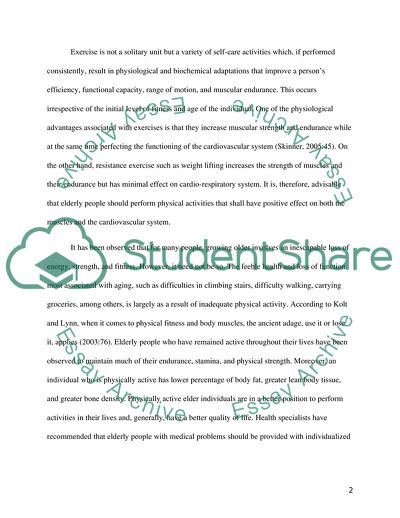Cite this document
(Physical Activities among the Elderly Essay Example | Topics and Well Written Essays - 2250 words, n.d.)
Physical Activities among the Elderly Essay Example | Topics and Well Written Essays - 2250 words. https://studentshare.org/health-sciences-medicine/1764506-engaging-in-physical-activitryexercise-can-have-psychological-and-physiological-benefits-discuss-these-benefits-with-particular-reference-to-elderly-people
Physical Activities among the Elderly Essay Example | Topics and Well Written Essays - 2250 words. https://studentshare.org/health-sciences-medicine/1764506-engaging-in-physical-activitryexercise-can-have-psychological-and-physiological-benefits-discuss-these-benefits-with-particular-reference-to-elderly-people
(Physical Activities Among the Elderly Essay Example | Topics and Well Written Essays - 2250 Words)
Physical Activities Among the Elderly Essay Example | Topics and Well Written Essays - 2250 Words. https://studentshare.org/health-sciences-medicine/1764506-engaging-in-physical-activitryexercise-can-have-psychological-and-physiological-benefits-discuss-these-benefits-with-particular-reference-to-elderly-people.
Physical Activities Among the Elderly Essay Example | Topics and Well Written Essays - 2250 Words. https://studentshare.org/health-sciences-medicine/1764506-engaging-in-physical-activitryexercise-can-have-psychological-and-physiological-benefits-discuss-these-benefits-with-particular-reference-to-elderly-people.
“Physical Activities Among the Elderly Essay Example | Topics and Well Written Essays - 2250 Words”. https://studentshare.org/health-sciences-medicine/1764506-engaging-in-physical-activitryexercise-can-have-psychological-and-physiological-benefits-discuss-these-benefits-with-particular-reference-to-elderly-people.


